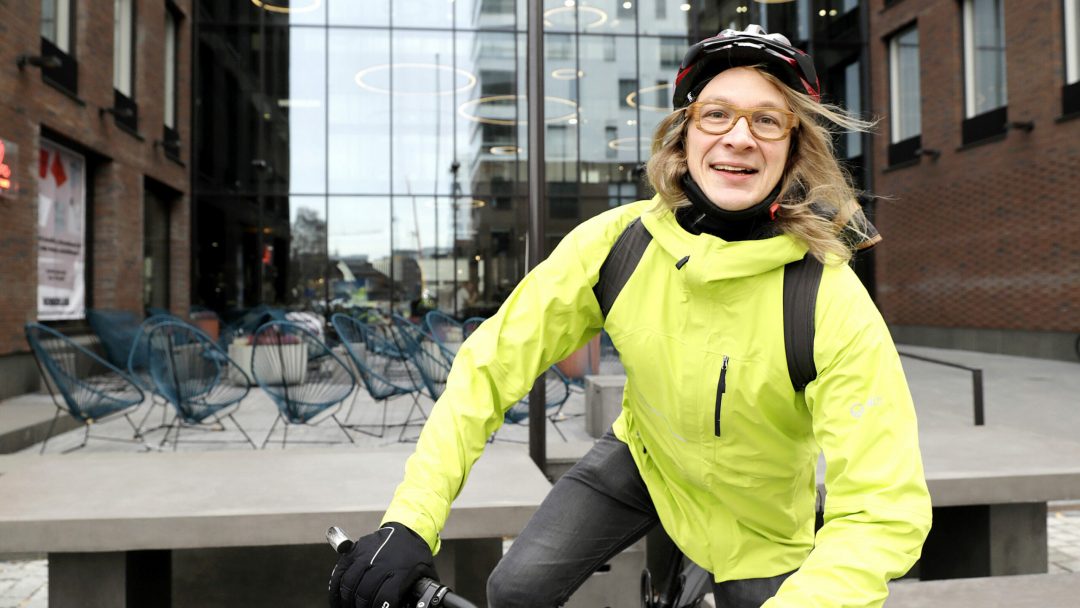27.11.2019
Bringing live urban culture to office quarters

Traditional urban planning has separated living from working. However, this trend is about to change. NCC is creating ideas to bring new life to office quarters and increase the efficiency of spaces in co-operation with the tenants, the residents of the surrounding area as well as the start-up companies in the business.
Could there be a way to offer the otherwise vacant conference rooms of an office building in the evenings, for example, as the venue for a housing company meeting or a pastime club?
Seems our own conference rooms are fully booked, could we take the meeting to the neighbouring building?
How could spaces in general be put to a more efficient use, regardless of the time of the day?
Could they open their doors and offer something useful, even experiential, to the residents living nearby?
These are the kind of questions that PhD in Technology Eelis Rytkönen, NCC’s “urban developer hippie” and concept creator, has been delving deeply into over the recent years.
At the same time, the theories built by our digital system developer are slowly starting to turn into practices: in NCC’s new development projects located in Ruoholahti (We Land) and Vallila (Fredriksberg) in Helsinki as well as in Hatsinanpuisto (OOPS) and Keilaniemi (NEXT) in Espoo, the entire planning and design is based on customer focus and service design.
We Land reshapes Ruoholahti
Ruoholahti is evolving, and Rytkönen can explain why. While the residential and workplace quarters were located quite far away from each other since the 1960s and automobilisation, they have pushed closer, in the best cases even entirely together – just the way they were in the city districts of the past decades.
“The development of office and retail spaces in the present form has reached its limits. New spaces must be put to a more efficient use and opened also to the residents of the surrounding area. And we cannot go on building new houses indefinitely. It is unsustainable even for the globe,” Rytkönen reminds.
The future can be found, for example, in Ruoholahti where NCC is building a business hub with a new, user-oriented approach called ‘We Land’. It is a project to be completed in 2022 for which the wishes and demands of those living and working in the area were charted right from the earliest stages of design work. The project is being co-designed with the AI company CHAOS Oy whose analytics tools NCC employs to monitor the demands of the people using the area, to collect data on the current trends and to make better conclusions on their basis.
Start-ups are our key partners
Although the project will still take some time to finish, we have already started the development of the We Land User Experience this autumn. The project team includes, for example, the lift company, university researchers, top restaurant operators, a lobby service officer, architects, an automation designer and a project engineer.
”We have MaaS, SaaS and soon even ’SpaaS (Space as a Service). In the years to come we strive to transform the office quarter spaces more clearly into service which the operators offer to lease, instead of monthly or annual agreements, for only a couple of hours or days at a time,” Rytkönen explains.
In addition to CHAOS, NCC is collaborating on its most recent projects with Tractr, a company which has created a space network analytics application, and Netlet which specialises in construction circular economy. In Rytkönen’s opinion the collaboration with start-ups is highly beneficial, since it brings the projects closer to their end-users and accelerates the digitalisation process of the construction industry.
”Start-ups are agile partners with the required special competence. They are also able to look at things from new, at times even surprising angles,” Rytkönen acknowledges.
Written by Timo Sormunen. The article was published in the Finnish construction magazine's supplement 'Building the future'.